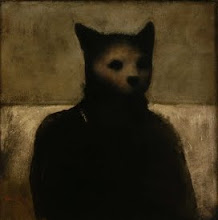
While researching ancient martial arts I came across some information about Egypt and with it some noteworthy theories and images. While the pictures speak for themselves, depicting organized systems of unarmed combat (likely for sport), the following research intrigued me despite its difficulty in varification:
“The earliest representation of any kind of belt associated with the martial arts are found in Kemet (Egypt) along the banks of the Nile in tombs belonging to Prince Khety, and Prince Baquet III of the 11th and 12th dynasties (circa 2,800 B.C.). In both tombs there are two pairs of warriors facing each other. In the example from Prince Khety's tomb (left) the warrior stands with his left foot and outstretched left arm forward. From his left hand, a belt in the form of a rope dangles to the floor. This rope does not fall naturally into two strands as it normally would. The belt is interwoven. It is not simply a rope. It is the symbol "shen" which is a "coiled rope" used to represent intertwining bio-electrical, magnetic and spiritual polarities, or opposites. The opponent facing him is tying the belt around his waist… In ancient Kemet, the study of the human mind, body, and soul gave rise to the knowledge of seven energy centers located along the spinal column that rose from the base of the spine and terminated on the top of the skull. These energy centers are linked to the awakening of one's spiritual powers. These power centers in India are known as "chakras".... Starting from the base of the spine, the first three (lower) chakras) represent one's animal nature while the remaining four (higher chakras) represent one's higher spiritual nature... The tying of the belt at the third chakra was a symbolic act meant to remind the student that training was for the purpose of developing the kundalini, or spiritual life force, from it's lower to its highest point along the spine. In ancient Kemet, belts had nothing to do with rank and achievement in the outward sense. The true meaning of the belt is lost today among practitioners of the so-called martial arts who have actually reversed the original intent, and use the belt to focus on the lower nature of ego instead of a higher nature which leads to enlightenment.”
This is from The African Origin and Meaning of the Belt in Martial Arts by Nijel BPG, author of Nuba Wrestling--The Original Art. To me, the concept is consistent with the Asian schools of Chi cultivation and the non-duality theory of Zen.
This is from The African Origin and Meaning of the Belt in Martial Arts by Nijel BPG, author of Nuba Wrestling--The Original Art. To me, the concept is consistent with the Asian schools of Chi cultivation and the non-duality theory of Zen.

Hm. I sense a critical attitude towards coloured belts, as usual.
ReplyDelete